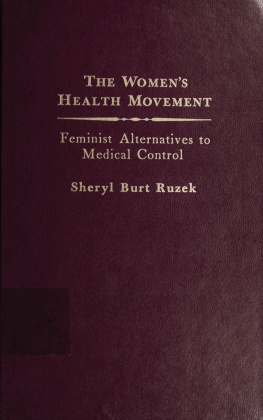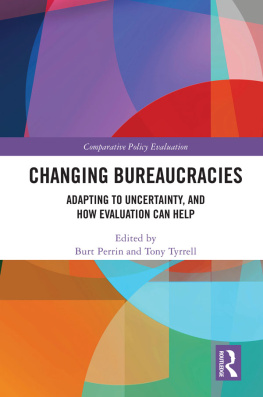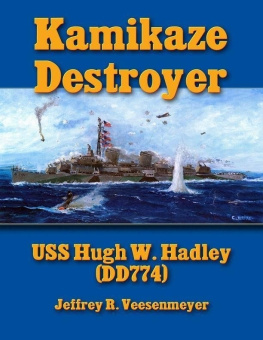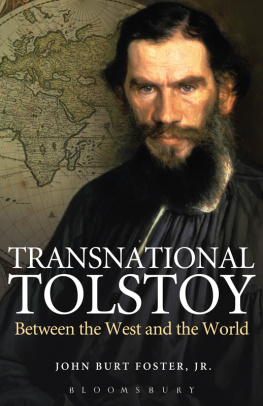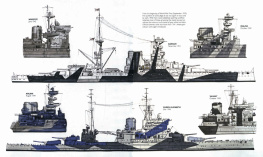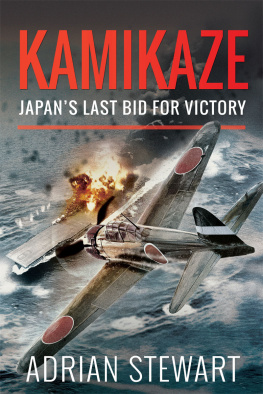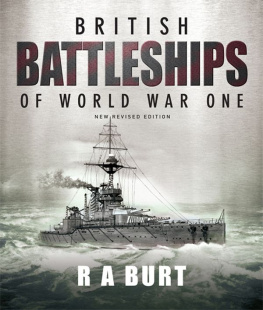Ron Burt - Kamikaze Nightmare
Here you can read online Ron Burt - Kamikaze Nightmare full text of the book (entire story) in english for free. Download pdf and epub, get meaning, cover and reviews about this ebook. year: 2013, publisher: CreateSpace Independent Publishing Platform, genre: History. Description of the work, (preface) as well as reviews are available. Best literature library LitArk.com created for fans of good reading and offers a wide selection of genres:
Romance novel
Science fiction
Adventure
Detective
Science
History
Home and family
Prose
Art
Politics
Computer
Non-fiction
Religion
Business
Children
Humor
Choose a favorite category and find really read worthwhile books. Enjoy immersion in the world of imagination, feel the emotions of the characters or learn something new for yourself, make an fascinating discovery.

Kamikaze Nightmare: summary, description and annotation
We offer to read an annotation, description, summary or preface (depends on what the author of the book "Kamikaze Nightmare" wrote himself). If you haven't found the necessary information about the book — write in the comments, we will try to find it.
Kamikaze Nightmare — read online for free the complete book (whole text) full work
Below is the text of the book, divided by pages. System saving the place of the last page read, allows you to conveniently read the book "Kamikaze Nightmare" online for free, without having to search again every time where you left off. Put a bookmark, and you can go to the page where you finished reading at any time.
Font size:
Interval:
Bookmark:

.
Copyright 2012 by: Ron Burt
All rights reserved.
ISBN: 1-4801-9269-4
ISBN-13: 9781480192690
eBook ISBN: 978-1-62347-555-0
.
CONTENTS
.
The USS Ommaney Bay (CVE-79) is shown minutes after a kamikaze crashes on the flight deck at the base of the superstructure. The crash occurred at 1715 hours, Thursday, January 4, 1945. A single engine KI-43 Oscar, flown by First Lieutenant Hiroshi Tsuru or Second Lieutenant Seiji Ishikawa (both were members of the Special Attack Force Issei-tai) departed from Del-Carmen air base, located on Luzon north of Bataan Peninsula, between Olongapo and Angeles. The kamikaze reached the invasion fleet undetected.
Location of the fleet is in the Sulu Sea near Panay Island, Philippines, in route to Luzon for invasion from Lingayen Gulf on January 9, 1945.
This photo was taken from the battleship USS West Virginia (BB-48). The destroyer USS Patterson (DD-392) is attempting to approach the Ommaney Bays (still underway about 3 knots) port side to assist. Several motor whale boats can be seen off the starboard side of the Patterson. These whale boats are assisting in the rescue of survivors already in the water. U.S. Navy Photo.
.
Writing a book cannot be appreciated until you actually begin the work. This can be extremely difficult when you are not a professional. I could not justify the cost to hire a ghost writer. Besides, I wanted to write this story.
This project required many hours of research and much cooperation from many people. Because of their unselfishness, they devoted their time and energy in contributing to this story. I am grateful to my brother Pete for being so patient with my inquiries concerning his traumatic experience and for Marilyn, his wife, for her rehabilitation of Pete.
Ommaney Bay survivors who have contributed stories, documents and pictures are: Bob Gregory, Lawrence FitzGerald, Jim Nickas, Jack Handley, Leonard Crawford, Coy McClendon, Joe Cooper, Chester Ford, Ellis Mel Melville and Wallace Schmidt. Some of these survivors stories were not told in this book, however, they definitely contributed to form the whole picture. Many Ommaney Bay survivors expressed in letters and telephone calls their concern and their desire to help. There are too many to list, however, their concern is appreciated.
Several veterans from the USS Eichenberger (DE-202) were very generous in offering help - Bob Harris for supplying documents and J. W. Hamilton for addresses and Warren Penn for his account of the disastrous explosion on the Ommaney Bay killing three of his shipmates and wounding him while they attempted to rescue more Ommaney Bay survivors; and Cliff Burnett for furnishing photos of the Eichenberger.
From the USS McCall (DD-400), R. W. Bob Dean, was most helpful with his first hand account on rescuing one hundred and eighteen Ommaney Bay survivors. Bob Cleghorn, H. C. Dugal and William Dunn furnished contact information and Ted Zygadlo supplied a current roster of the McCall. All of this information furnished by these people was crucial in my research and it is greatly appreciated.
Arthur Stack offered a unique transcript, his personal diary, that he maintained while he was on board the USS Bull (APD-78) as a member of Underwater Demolition Team #14 (U.S. Frogmen). Arthur wrote many letters of encouragement for which I am grateful.
Captain Cary Hall gave his account of January 9, 1945, as Air Defense Officer on the Columbia, and am grateful for his contribution.
Last, but not least, my appreciation goes to June Custer for her encouragement at the outset of this project and to the final stages and the many hours she devoted in editing this story.
.
This story is dedicated to my brother, Pete Harold Burt, and his shipmates of the USS Ommaney Bay (CVE-79), USS Columbia (CL-56) and other veterans who suffered through the kamikaze nightmare.
Because of the devotion and love of their country, these veterans fought to preserve the freedom of the United States of America. Due to them and all American veterans from all combat encounters since the birth of this great nation, America remains free. The American veteran is the true strength of this nation. May God bless them all!
.
War is a breeding ground for atrocities. Allied Forces experienced many in Europe and in the Pacific during World War II. Mans evil can be at its worse when nations war against each other. Japans Great Pacific War created the misery dealt by the kamikaze nightmare.
In mid-1944 the Japanese felt the vise-like grip American forces applied against them as they closed in on the Philippine Islands. Fearing the loss of this important archipelagoes and the threat it posed to the Japanese empire and her defense perimeter, Admiral Takajiro Ohnishi established Special Attack Forces (Suicide Units) throughout the Philippine Islands. On October 13, 1944, the Imperial Japanese Army launched their kamikaze (Divine Wind) suicide campaign which they named Tokko Tai. Japanese Army pilots referred to it as self-explosion (jibaku). This first attack struck the aircraft carrier USS Franklin (CV-13) off Formosa.
Divine Wind is derived from a powerful typhoon which destroyed two invasion fleets, one from Korea and the other from South China. Sent by Kublai Khan, the two fleets converged at Takeshima, Japan, on August 12, 1281. The size of the invasion force varied. Estimates range from a low of 800 ships and 10,000 men up to an amazing high of 4,400 ships and more than 200,000 men. That last estimate breaks down into 900 ships, 17,000 sailors, 10,000 Korean soldiers and 15,000 Mongol and Chinese troops for the Eastern Route force, and 3,500 ships, 60,000 sailors, and 100,000 Chinese troops for the South Yangtze force.
Legend has it that when the representative of the ex-Emperor Kameyama arrived at the Ise shrine to petition the sun goddess Amaterasu-O-mikami, a small cloud appeared in a perfectly clear sky and began to grow until it covered the entire horizon. Regardless of its origin, a powerful typhoon struck the combined invasion force. It has been estimated that up to one-third of the Eastern Route force and one-half of the South of Yangtze force perished. One Chinese account states that only three men of the entire invasion force made it home.
This was the second time a typhoon had wiped out an invasion force from China. The first occurred in the year 1274. Hence the term Divine Wind, was born.
The terms Kamikaze, Divine Wind and Thunder Gods (pilots who manned rockets launched from twin-engine aircraft), were unknown to the American fighting men until after the war. These attacks were directed toward the U.S. Naval fleet. Thousands of American sailors, soldiers and marines were victims of the kamikazes. They referred to them as suicide planes.
A few (very few) of these kamikaze pilots wore long hair, fashioned after the Samurai Warrior. All Japanese military people, including Admirals and Generals, had their hair cut short. Only the kamikaze was afforded the privilege to wear long hair. This hair style is known as Sohatsu, similar to the long hair styles of today. Japanese Naval Air Pilot, Petty Officer First Class, Shigeru Kojima had a Sohatsu when he crashed his Zero fighter into the super structure of the light cruiser USS Columbia (CL-56), at 0745 hours on Tuesday, January 9, 1945, during the invasion of Luzon, Philippines, from Lingayen Gulf.
This story is about my brother, Pete Harold Burt, Seaman First Class, a survivor of four kamikaze crashes while serving on board the escort carrier
Font size:
Interval:
Bookmark:
Similar books «Kamikaze Nightmare»
Look at similar books to Kamikaze Nightmare. We have selected literature similar in name and meaning in the hope of providing readers with more options to find new, interesting, not yet read works.
Discussion, reviews of the book Kamikaze Nightmare and just readers' own opinions. Leave your comments, write what you think about the work, its meaning or the main characters. Specify what exactly you liked and what you didn't like, and why you think so.


